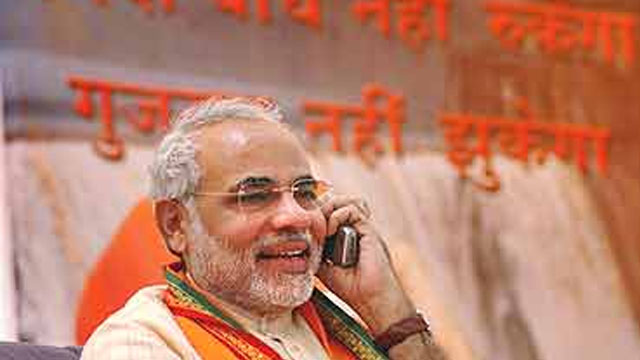Modi too had held a dharna in April 2006 against UPA government. Unlike Kejriwal, he was able to receive the exact response he wanted from the central government. Plus he was not called an ‘anarchist’.
When Aam Aadmi Party leader and Delhi chief minister Arvind Kejriwal sat on a dharna against the central government, media and people saw it as a first in the history of India. But the dharna attracted vehement opposition for the way it was conducted and the chaos it created. However anarchic it may have looked like, there is no denying the fact that the demand of keeping Delhi Police under state government’s jurisdiction was a legitimate one on Kejriwal and his government’s part. But it fizzled out without a conclusive decision on the part of any parties.
Similar was the situation on April 17, 2006, when Gujarat chief minister Narendra Modi sat on a 51-hour fast in support of his government’s Sardar Sarover Dam project on Narmada river against UPA government at centre. There were speculations that the Soz committee, which was appointed by central government and chaired by then water resource minister Saifuddin Soz might not favour the project given its vehement opposition. The Supreme Court was going to take its decision on the basis of this report.
So, Modi sat on a fast with his cabinet, his party members, several local leaders, representative of the chambers of commerce and several NGOs. As opposed to Kejriwal’s few men, about 3,000 people sat on a dharna and relay fast on the Gujarat University ground in Ahmedabad along with Modi.
The fast venue was calm. There was no chaos. There were no bad words flying from the mouth of ministers. There was no threat to any of the national festival or ceremony or parade whatsoever.
To top it all, Modi received the exact response that he wanted – UPA government’s affidavit to Supreme Court supporting the construction on Narmada. He ended his fast on April 17, 2006 – 22 hours before the fast was scheduled to end.
Also, while addressing the gathering after ending his fast, Modi slammed the government over sharing confidential documents with the Narmada Bachao Andolan leaders. He not only accused the Centre of being “anti-Gujarat”, he also blamed the government for indirectly fuelling separatist movements.
“It has provided me an insight on why separatist movements keep raising their ugly heads from time to time in different parts of the country. It’s because such Central leaders do not allow some parts of the country to progress and try to hinder development,” he had said.
While Modi’s fast was seen as his victory and UPA’s submission, it was also not called anarchic in any sense. However, if we go in the merits of anarchism, it was no less an anarchic situation.
But here was Kejriwal, who not only attracted negative publicity, his demands even were not met. His cabinet and party members, including supporters, had to sit in chilly weather, face the rain and sleep on the road. Some faced Delhi Police batons too.
In the end, he was given a face-saver by the same ‘evil’ Congress, which is his ally in Delhi, due to his party’s lies regarding law minister Somnath Bharti’s condemnable actions. Now his minister has to answer the court for the racist slur that he made. But he calls it “people’s victory”.





